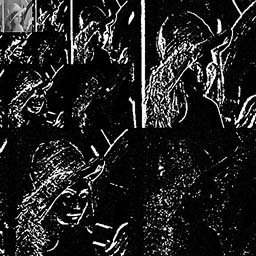Organisational Projects

Design and Development of ICS (Inventory Control System). The system maintained the inventory status, sales orders, purchase orders, sales of each product and customer information. Security of the system was maintained by having privileges and validation was done at all levels, software used was C/JAVA and ORACLE 7.0.
- Developed a computerised solution for organising customer booking for the tyres & tubes for Mypol Sales dept. This project replaced the paper-based system with a computerised booking/invoicing/receipting system. Front end was using Borland Delphi 4.0 and can be connected to any database.
- Designed and Implemented authentication product in Visual Basic 5.0 . This project was to have an authentication system for employers logging into system adding new employers into main database using ODBC.
- Developed a computerised solution for organising customer booking for the tyres & tubes for Sales dept. This project replaced the paper-based system with a computerised booking/invoicing/receipting system. The project involved the design of the Database, forms, and reports using Borland Delphi 4.0.
- Design and Development of employers search engine, the project involved making a employers database using Micorsoft Access and connecting it to application using JDBC & JAVA.
Academical Projects

- Patient monitoring system Design and implementation of a Hospital database system for handling patient information data , the diagnosis, the treatment and the patient related medical images. The implementation was done using Java using RMI and JDBC. The database was based on ORACLE.
- Volunteer database for Red-Cross QLD Australia. This project involved the development of a database for Red-Cross using Case Tools (LBMS). The database was implemented using access and the front-end tool was VisualBasic .
- Implemented a Flight Reservation System using ORACLE RDBMS & SQL (Course Work).
- Designed and developed a University Timetabling System the software used was
Borland Delphi 4.0 and Paradox database.
- Fast image feature extraction & segmentation included Image feature extraction, Image segmentation and Image retrieval using wavelet transform Using
sequential method . This project algorithm could be extended for bar code
matching , pattern recognition and character recognition , Implementation
involves programming various algorithms in C & UNIX.
- Development of Memory Module and Process Module of operating system using C & UNIX.
- Usage of Socket Programming to Inteconnect two different processes simulated On different machines using distributed systems Enviornment using C & Unix.
New project status
Fast Image Feature Extraction & Segmentation
This project is based on the utility of Wavelet
transform, fractional discrimination and Hausdorff Distance Transform.
These features will be used to
address some of the questions of this project.
This project is being supervised by Dr.
Jane You and Dr. Hong Shen,
School of Computing & Information Technology, Griffith University,
Australia.
The objective of this project :
-
Image feature extraction
-
Image segmentation
-
Model-based Matching and Image
retrieval
-
Compare the computational speed in parallel environment
with respect to sequential method.
The very name wavelet comes from the requirement
that they should integrate to zero, "waving" above and below the x-axis.
Wavelets are local in both frequency (via dilations) and in time (via translations).
There are various types of wavelets, one can choose from smooth wavelets,
compactly supported wavelets, wavelets with simple mathematical expressions,
wavelets with simple associated filters.
There are some important differences between the
Fourier analysis and wavelets. Fourier basis functions are localized in
frequency but not in time, but wavelet is localized in both the domains.

Figure 1. Image lena when passed through three wavelet
transform
The features of wavelet transform has been applied
in this project to extract some feature from the image. The image has been
passed through three Wavelet transform. From the figure 1 we can
see that one quater of the image is smaller version of the image - a lower
resolution version. The other looks like edges of the image. The above
hierarchial representation signifies that the image has been coressed to
a significant level and the resolution has dropped.
To enhance our feature extraction procedure we
have used the Interesting Point Algorithm to determine the edges
of the image. The algorithm was first applied to the decomposed original
image, and later it was applied to each of the three associated images
of subband level three. The sum of these images were used to compare the
results with that of the edge detected by the original image. The same
has been illustrated in figure 2.
 Figure 2. Comparison of images on applying
normal interesting point algorithm.
Figure 2. Comparison of images on applying
normal interesting point algorithm.
In the project we are presently working on the
code for matching and other associated feature extraction
algorithms.

Links to some project related
sites
-



All copyrights reserved by the author.
If you have any suggestions please mail the
author - ramabellur@mailcity.com.
Dated: Jan 20, 1999
 Author: Rama Bellur
Author: Rama Bellur




 Author: Rama Bellur
Author: Rama Bellur